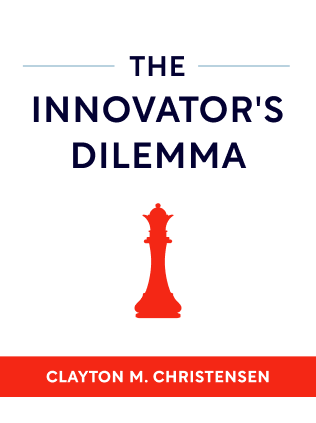

This article is an excerpt from the Shortform summary of "The Innovator's Dilemma" by Clayton M. Christensen. Shortform has the world's best summaries of books you should be reading.
Like this article? Sign up for a free trial here .
What is downward mobility? How is it a good thing?
Downward mobility is a company’s ability to move to smaller or lower-price markets. It is the counterpart to the growth that comes with upward mobility.
Read on to understand downward mobility and the risks that come with downward immobility.
Upward Mobility and Downward Mobility
Successful companies typically focus on growing and moving upmarket with higher-priced products, higher-tier customers, and larger profits. However, this upward mobility makes firms downwardly immobile—it impedes them from adopting disruptive innovations, which always start downmarket.
Risks of Downward Immobility
Established companies face three key barriers to downward mobility:
- Cost structures that favor seeking higher profit margins upmarket over cutting costs to remain profitable downmarket
- Organizational cultures that pull efforts toward upmarket projects
- The upmarket drift of a company’s customers and competitors
Barrier #1: Cost Structure
As discussed in Chapter 2, organizations develop cost structures that fit their value networks—value networks for higher-priced products require larger gross profit margins to cover higher overhead costs than value networks for lower-priced goods. These cost structures force companies to maintain profit margins to simply stay afloat.
In fact, most companies aim to move to progressively higher-value markets, which is the opposite of downward mobility. This is especially true when disruptive technologies invade their markets, because the disruptive products generally enter the low end of the market and gradually climb to higher tiers. For example, when 3.5-inch disk drives ascended from the laptop to the desktop market, Seagate didn’t try to compete—instead, the company increased efforts to improve 5.25-inch drives enough to enter the market for minicomputers.
If an established company wants to invest its limited resources in the small, low-profit market for a disruptive product, company leaders would have to find a way to somehow cut costs. However, a company’s overhead costs include market research, product development, and marketing that’s critical to remaining competitive in its existing market. Most companies find it impossible to bring in enough profits from existing products while also trimming overhead enough to invest in disruptive ones.
Barrier #2: Organizational Culture
A company’s upward or downward mobility is determined by the projects it chooses to invest in, and most companies have processes that steer them toward high-profit projects. Although it may appear that senior managers are responsible for choosing the projects that a company invests in, middle managers actually play a more significant role in this process as gatekeepers.
Middle managers filter the ideas that come from engineers and other employees, carefully deciding which projects they’ll pitch to senior managers. Middle managers want to pitch only projects with a high likelihood of success and profitability—otherwise, they risk taking a hit to their credibilities and careers—and upmarket projects are the surest way to achieve that.
Under normal circumstances, a company’s success depends on having processes like this (formal or de facto) that weed out low-profit projects—otherwise, the company would waste too many resources on projects that don’t provide a return on investment. But these same processes steer companies away from disruptive technologies, making the firms vulnerable to being overtaken by the disruption.
Barrier #3: Upmarket Drift
Often, companies can drift upmarket without making a conscious effort to ascend to the next value network. Companies drift upmarket when their customers are pursuing higher markets, and when their competitors are similarly leaning upmarket to meet customers’ needs. This makes downward mobility more challenging.

———End of Preview———
Like what you just read? Read the rest of the world's best summary of Clayton M. Christensen's "The Innovator's Dilemma" at Shortform .
Here's what you'll find in our full The Innovator's Dilemma summary :
- Christensen's famous theory of disruptive innovation
- Why incumbent companies often ignore the disruptive threat, then move too slowly once the threat becomes obvious
- How you can disrupt entire industries yourself






